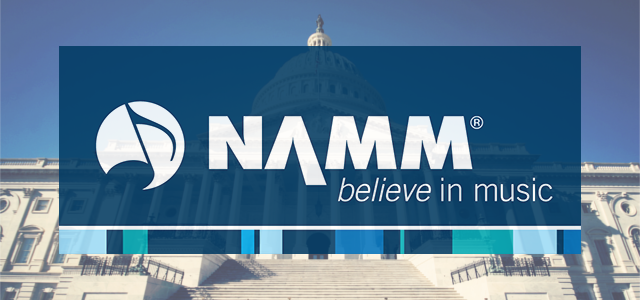
More school-aged children nationwide will have access to music and the arts thanks to Congress’s inclusion of both subject areas as part of a well-rounded education in the reauthorization of the Elementary and Secondary Education Act (ESEA). The Senate passed the bill on Wednesday, December 9, 2015, with a vote of 85 to 12, and the act now heads to the President’s desk.
NAMM, hundreds of NAMM members and music industry leaders have spent years meeting with Congressional leaders on the importance that every child has access to music in schools. Congress has now shown that it too believes in music as part of a well-rounded education that should be available to all students.
“We are grateful for the army of NAMM member advocates who have contributed to thousands of meetings with Members of Congress over the years. They successfully drove the point home that music education is a vital element in a complete education for all children,” said Mary Luehrsen, director of government affairs for NAMM. “With this new legislation, we will expand our advocacy efforts around the belief that, indeed, every child succeeds with an opportunity to learn and grow with music.”
NAMM specifically commended members of the ESEA conference committee, members of the Senate Health, Education, Labor and Pensions Committee, and the House Education and the Workforce Committee, for advancing legislation that will create new opportunities for a well-rounded education for all students. The reauthorization of the “Every Student Succeeds Act” will replace 2002’s “No Child Left Behind Act.”
The new bill’s inclusion of “music” and “art” in the definition of a “Well-Rounded Education” marks an unprecedented step forward for music education, as it connects to a variety of other significant provisions in the “Every Student Succeeds Act.”
In addition to explicitly listing music as a component of a well-rounded education, the “Every Student Succeeds Act” also protects students’ music and arts class time, and provides new opportunities for music and arts education through formula funding grants.
Protecting Students’ Class Time: protection for students struggling in other academic areas from being pulled from music and arts courses in favor of remedial education. The bill emphasizes the importance of classroom time within these courses, helping to ensure that students are provided with an equally meaningful learning opportunity.
Federal Grant Opportunities: opportunities for music and arts education through formula funding grants in Title IV. States receiving formula grants must use those funds for purposes of carrying out particular state activities, including offering “Well-Rounded” educational experiences, such as music, to under-represented, disadvantaged or minority students. The bill specifically notes activities and programs in “music” and “arts” as appropriate uses of formula grants.
For the last decade, NAMM members have invested their time on Capitol Hill with U.S. Senators and Representatives to advocate for music education. As the bill began to work through both houses of Congress, NAMM mobilized its membership and the SupportMusic Coalition to call, tweet and write to their legislators, supporting music education’s inclusion in the final version.
For up-to-date coverage of the bill’s reauthorization, visit: https://www.namm.org/public-affairs/articles/track-esea-reauthorization-bill.


